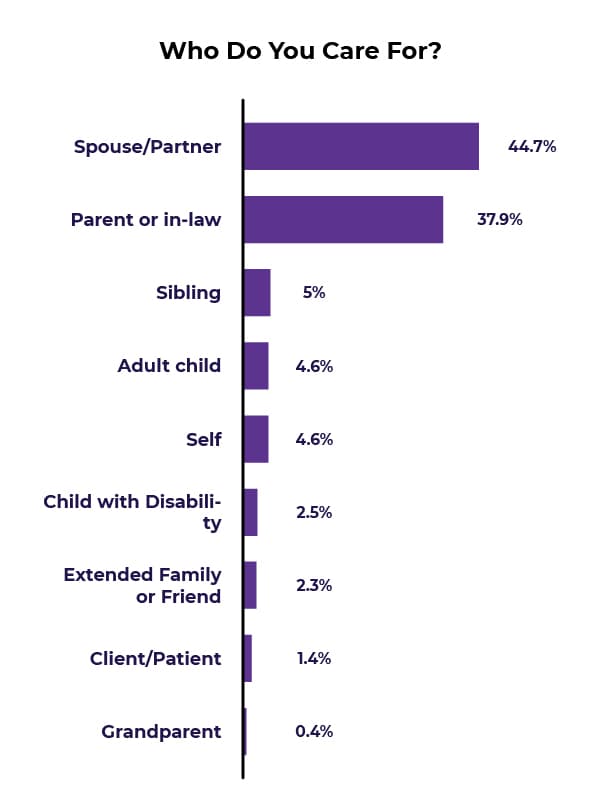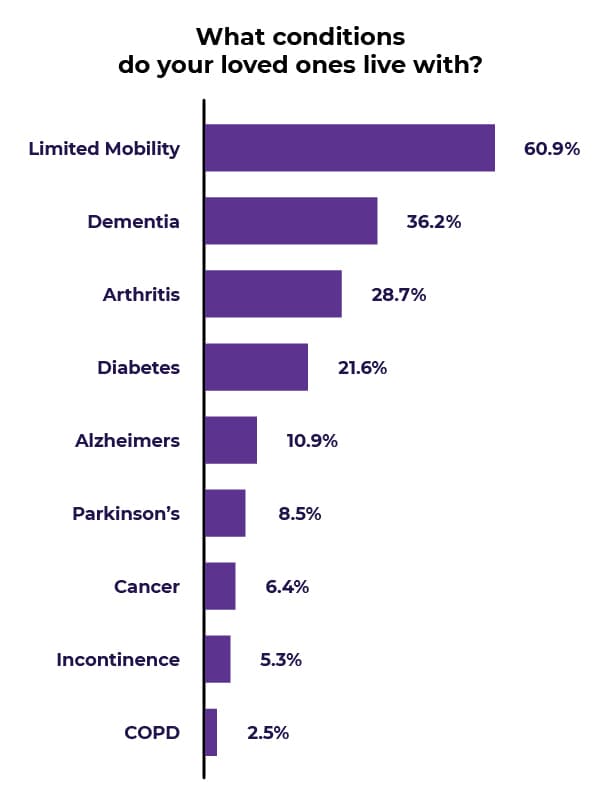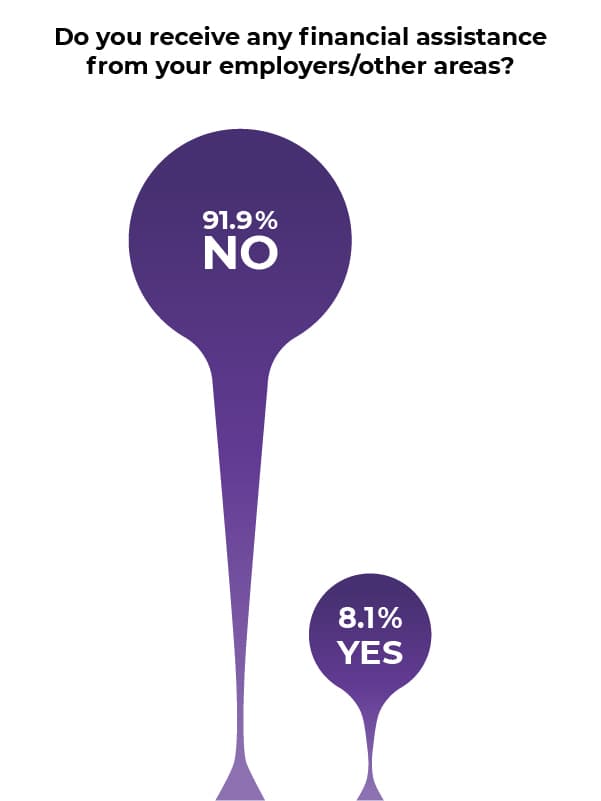Here at Carewell, supporting family caregivers is our passion. To ensure we’re able to provide the highest quality products and customer service, it’s our goal to understand you and your family’s needs.
At the end of last year, we surveyed some of the family caregivers we serve to learn more about their responsibilities as well as the challenges they face. Though their responses varied, a series of patterns emerged. In this article, we highlight those patterns, provide the supporting data, and take a closer look at things we can do to make life easier for these American heroes.
Limitations:
Left out key choice (i.e. incontinence) in “Condition” questions
Allowing open-ended “other” responses helped gather additional data, but made the original data collection murky
No way to know if someone completed the survey more than once
No way to know if someone said they weren’t a caregiver just to get through the survey
The Average Family Caregiver is a Woman Who is Also a Baby Boomer
Our survey, conducted in September of 2021, found that even though adults of all ages serve as family caregivers, most are Baby Boomers. In fact, 64.9% of survey respondents said they were born between 1946 and 1964.

What’s more, the majority of family caregivers are women. 83.8% of respondents were female while only 16.2% were male.
Spouses, Partners, and Parents Are Most Likely to Receive Care
Most family caregivers provide assistance to a spouse or partner (44.7%), or their parents or in-laws. (37.9%). The other 17.4% care for an adult child, a child with a disability, a sibling, an extended family member, or a friend.

Most Common Medical Condition: Limited Mobility Is the That Requires Care
Many care recipients need help with activities of daily living (ADLs) like eating, getting dressed, and using the toilet. Our family caregiver survey reflects that information, with 60.9% of respondents saying they take care of someone with limited mobility. Other common medical conditions that require regular assistance include dementia, arthritis, and diabetes.

The Average Family Caregiver Works More Than 40 Hours A Week But Doesn’t Get Paid
Our survey found that more than half of family caregivers (52.9%) spend 40+ hours each week providing care. Another 15.4% of respondents provide between 11-20 hours of assistance per week.

Caregiving duties range from running errands and attending doctor’s appointments to managing finances, assisting with medication, and preparing meals. These responsibilities are enormous, yet 94.3% of survey respondents said they don’t receive any compensation.
Many Family Caregivers Continue Working Outside the Home
The majority of family caregivers are of retirement age, but many continue to work. In fact, 39.7% of respondents said they maintain a part-time or a full-time job in addition to their caregiving responsibilities.
Of those who work, only 8.1% receive any type of financial assistance from their employers. The remaining 91.9% don’t.
The Average Family Caregiver Needs Assistance
That brings us to an important topic –– the growing need for caregiver assistance. In the United States, there are more than 9.5 million family caregivers and their ranks are expanding daily.
It’s no wonder then, that when we asked the question “what services would help you as a caregiver?” 54.1% of respondents said financial assistance, 32.4% of respondents said support groups, and the remaining 13.5% said respite or caregiver support.
Access to resources varies from state to state, but there are programs designed to help Veterans as well as people with special medical needs. Click here to access a list of resources from USA.gov. There’s even a web chat function so you can ask a real person any government-related question for free.
Family Caregivers Are Constantly Learning
One of the last questions in our survey was “where do you go for caregiving advice and information?” 71.3% of respondents said the doctor, and 21.6% said Carewell.com. Thank you! We’re honored that you rely on our learning center and we promise to continue creating great content that’s relevant to you and your family’s needs. Other must-read resources that respondents recommend include WebMD, AARP, and Healthline.
The Carewell Customer Survey - In Conclusion
Thanks to YOUR responses to our Carewell Customer Survey, we’ve learned a lot about family caregivers in America. At the same time, it confirms something that’s been known for a while –– the majority of family caregivers are unpaid, middle-aged women who sacrifice their energy and time to ensure their loved ones are healthy, happy, and able to thrive.
Thanks again to everyone who responded! The feedback you provided is invaluable and we’re already incorporating it into various resources, including our learning center, blog, and social media channels.
If you ever have questions or need help finding a specific product to meet your care recipient’s needs, please contact our friendly Care Specialists. Call (800) 696-CARE or send an email to support@carewell.com.







